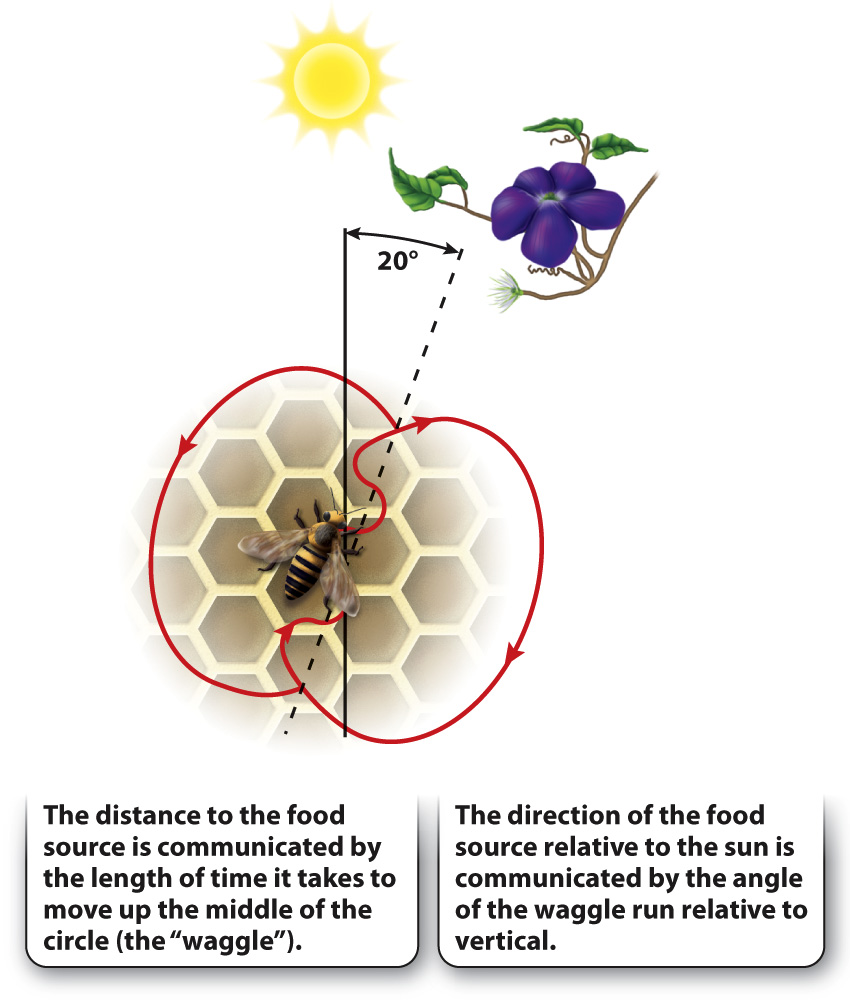Other forms of communication convey specific information.
Honeybees have an elaborate means of communication that is quite different from the sound-
Returning workers pass samples of the collected food to other workers that gather around the forager when she returns to the hive. The returning foragers then begin a series of movements in specific patterns that encode information about the direction and distance of food sources. This is the dance language of honeybees, originally discovered by Karl von Frisch.
If the food source is more than about 50 m away, the incoming forager does a waggle dance. The steps of the dance are illustrated in Fig. 45.15. The forager moves quickly back and forth (“waggles”) as it moves forward, circles back and repeats the waggle, and then circles back the other way, and so on. This dance usually goes on for several minutes and may take much longer. The distance to the food source is conveyed by the length of time it takes to waggle up the middle of the circle. The direction, with reference to the position of the sun, is conveyed by the angle of the line of the waggle run: If the food source is in a direct line with the sun, the dancer’s waggle line points straight up; if food is at an angle of 45 degrees to the left of the sun, the dancer’s line is 45 degrees to the left of vertical. Short of human language, the bees’ dance language is among the natural world’s most extraordinary and effective methods of communication.
